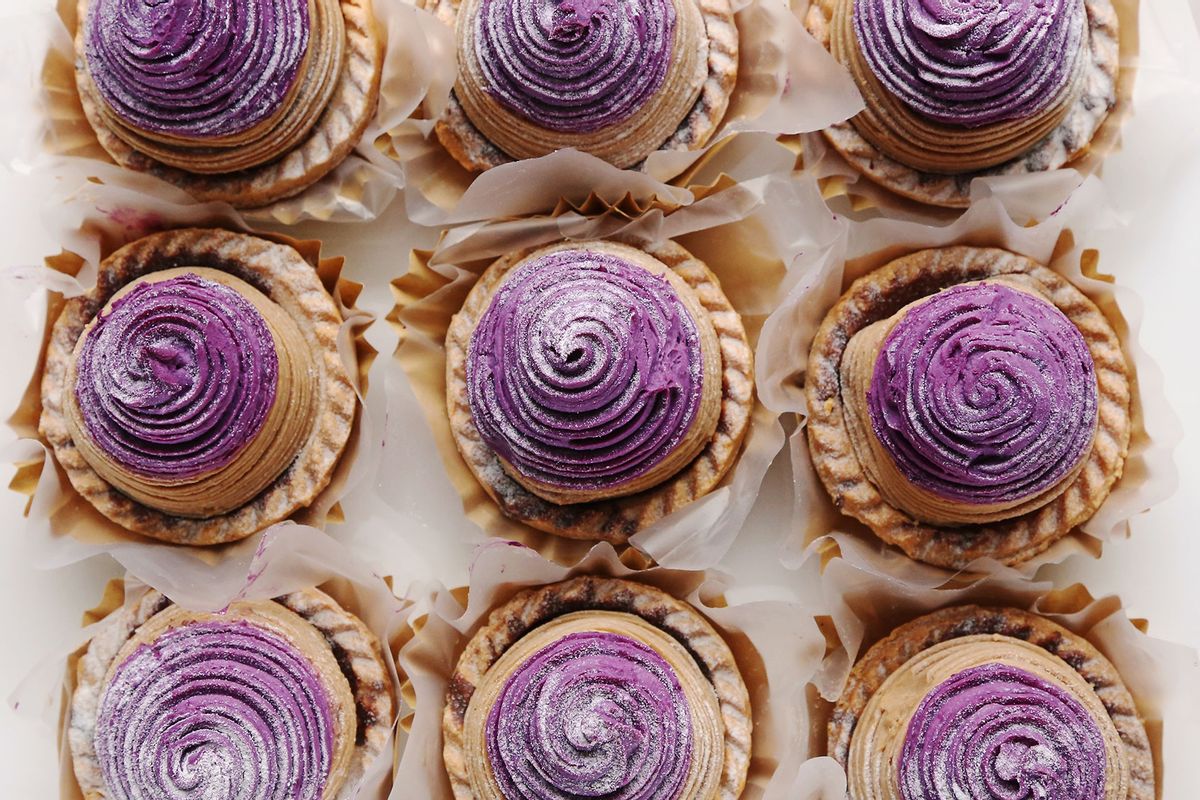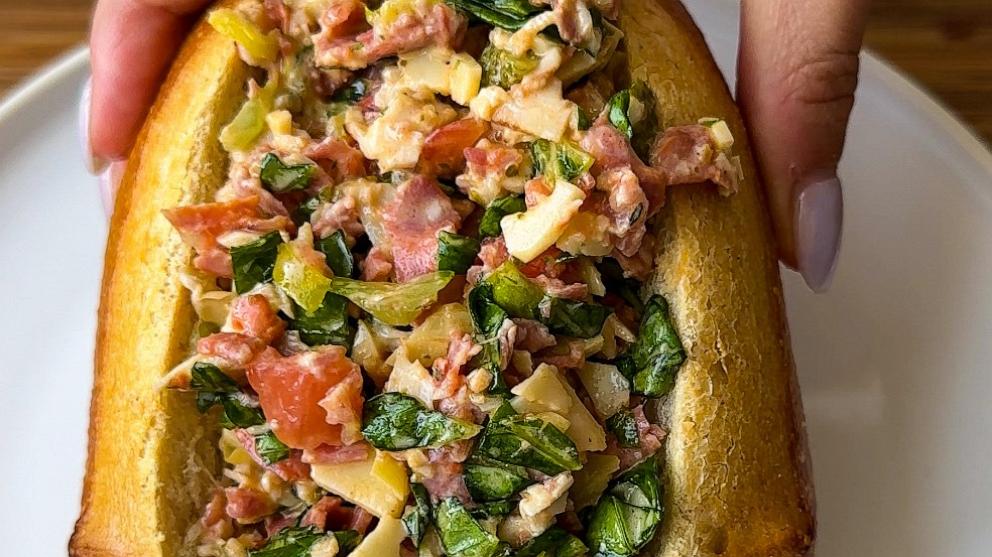Experts predict the top beverage industry trends of the season.
getty
The last year has completely upended the drinks industry. Bars crumbled in favor of at-home drinking. Consumers drank more, or not at all, fueling a wave of non-alcoholic options. Hard seltzer rose, then fell, then paved the way for a whole slew creative RTDs. Sustainability continued to become a larger and larger part of the conversation, while a proliferation of online ordering options made it easier than ever to order booze.
So what’s to come? Experts predict the top beverage industry trends of the season, from what’s next for RTD to a big moment for classic cocktails.
Agave Spirits
“One of the greatest success stories over the past few years has been the explosion of tequila and mezcal,” says Zach Kameron, the beverage director of Peak in Hudson Yards. “The tequila you are getting today is incredibly better than the tequila you were getting 10 years ago, so as the market is maturing people are looking for higher quality products that have a high purity of expression.” He notes that Peak recently received new releases of Clase Azul—the bottles sold out before ever hitting menu. “That sort of engagement with allocated products is normally only seen with fine wines and whiskeys, so the trend in agave spirits right now is definitely toward an appreciation for quality.”
“The tequila category has seen exponential growth due to the surge in consumer interest of the spirit and we anticipate this trend continuing through 2021, and beyond,” corroborates Sean Eckhardt, senior vice-president and managing director of sales, Bacardi North America. “Tequila and agave-based spirits appeal to a diverse consumer set. In the US, we’ve seen a shift in the perception of tequila from a party spirit to a sophisticated sipping serve that can now sit alongside single malts, as well as a base spirit for some of the most popular cocktails like the margarita, old-fashioned, negroni and Paloma.”
“I think tequila and agave spirits will continue to dominate the market,” says Julian Cox, the beverage director at Boom Bang Fine Foods & Cocktails in Las Vegas. “Back-ups on popular spirits due to COVID will continue to drive up demand for agave as well as other imports that are difficult to source in this pandemic environment.”
“On our end,” says Gary Wallach, the director of food and beverage at Arlo SoHo, “we have seen the rise of lesser-known agave and agave adjacent spirits such as Baconara, Raicilla, and the Sotol (the one we carry has Rattlesnake in the production process), artisanal mezcals and the distinctions by region.”
Premiumization
“Over the past year and a half, people have gravitated toward brands they know and trust. We have seen this mindset trend strongly among our existing and new consumers for our global family of premium spirits brands,” says Bacardi’s Eckhardt. “The categories experiencing fastest growth were tequila, Cognac, and bourbon. We saw these categories grow both in the off-premise—such as liquor stores and grocers—and via digital commerce with sites like Drizly, InstaCart, and Cocktail Courier, which emerged as a new channel for many consumers to easily purchase cocktails and spirits.”
Cool Weather Drinking
“Typically, heading into the fall and holiday season we see growth across whisky, red and sparkling wine, and seasonal flavors in beer, cider, and spirits—apple, pumpkin, cinnamon, and dessert-inspired,” says Brandy Rand, COO of the Americas at IWSR Drinks Market Analysis. “Many of the current trends we’ve seen across RTDs, particularly pre-mixed cocktails, and tequila, will likely continue. The change in consumption occasions as we head into football season and entertaining at home is big for the fall, particularly with cocktail-making so expect to see more elevated experiences at parties and get-togethers. This is also part of the continued trade-up trend, or premiumization, that accelerated during Covid-19 across many subsegments in alcohol.”
Non-Alcoholic Options
“More and more of my guests at my bar Kumiko, in Chicago, are asking for spiritfree drinks these days, and I think they are excited that there are more options than ever,” says Julia Momosé, Partner and Creative Director of Kumiko. “Beer makers in particular have had to improve their non-alcoholic beer flavor profiles to attract younger consumers, who are increasingly cutting back on their alcohol intake. I am seeing a far greater range of alcohol-free options (my personal favorite, ALL-FREE) and am enjoying watching folks discover them, and add them to their drinks repertoire.”
“Sobriety seems to be trending!” says Sarah Crowl, bar manager at Rosie Cannonball in Houston. “Particularly, spirit-free cocktails consumed in between rounds of drinks in social settings.”
Ready-to-Drink
“Ready-to-Drink (RTD) is one of the fastest-growing spirits categories,’’ says Eckhardt, “accelerating by 171% over the past year.”
“The RTD category is booming with a large variety of new players and explosive product development,” says Ignacio Llaneza, the Vice President of Brand & Trade Marketing at Disaronno International LLC. “Decades ago, the category was much smaller and consisted of high sugar and less natural options that paled in comparison to traditional cocktails. Now, the RTD category has moved towards higher quality, on par with premiumization trends. The growth of RTDs had already ignited before but accelerated even further as a result of everyone being sheltered in place. As consumers continue to look for different ways of at-home entertainment and/or on-the-go options, RTDs will continue to thrive.” Drizly has seen the category grow 60% in 2021 to date compared to the same period in 2020—with brands innovating at a rapid clip to keep up with demand.
That said, Kenny Richards, the CEO and Founder of Halyard Brewing Company, believes the RTD market needs to get savvy to survive. “Canned cocktails are convenience, not innovation, and hard seltzer is beginning to plateau. Craft beer is down overall, and from the looks of recent scan data, so are wine and spirits. The growing trends right now are dominated by innovation, and in that innovation, I think we are going to see consumers continue to turn towards products with ingredient transparency, craft processes, low sugar, and delicious crushable liquid.”
Supply Chain Hurdles
Monstrous tariffs are off the table as the squabbling between the US and EU simmers down. But producers and importers still face major supply chain hurdles
“We’ve existed in a world where ingredients are globally sourced. During the pandemic, we witnessed the breakdown of the supply chain—how quickly items arrive, what items are no longer available or less readily available, how prices have changed,” says Alba Huerta, owner of Julep in Houston. “For example, in Houston, Cognac is three times as expensive as it was prior to COVID-19, but we have an abundance of rum.”
“Many industry veterans are happy to see the tariffs go away but the current supply chains issues and particularly competition for shipping container space is putting a major damper on the excitement,” says Jordan Abraham, the bar director of GOZU. “Exponential price increases in shipping containers are causing many imports to increase in price and in a lot of cases, simply not make it over. One trend I think we’re going to see (and are currently seeing) is running out of product and many of our most beloved bottles are unavailable for extended periods of time (we’re already seeing this with grower Champagne, sake, shochu, and nocino). We’re trying to stock up on bottles that we believe will eventually become a challenge to obtain, for example, small producer sake, whisky, and Champagne, and unfortunately, I think we will see an increase in prices for bottles and a decrease in availability across the board.”`
Classic Cocktails
“I have noticed the trend of people returning to bars for classical cocktails—whether it be a riff on a classic or a spirit-forward drink,” says Milosz Cieslak, the Head Mixologist for Hollywood’s Grandmaster Recorders.
Chetan Gangan of Baar Baar in New York agrees. “I think classics are coming back into style, as opposed to having menus with all original cocktails. That’s not to say there isn’t any creativity or craftsmanship going into it—but I’ve noticed that bar programs are focusing on classics and making them the best way possible. I think there is a big wave of gin lovers too. Take the Gin & Tonic, for example. Guests are starting to take the G&T seriously—having a preference on the gin, and even the type of tonic, used. I’ve seen around 10 to 15 new gin brands/distilleries open in just the last couple of years.”
Responsibly-Made Wine
“While natural wine is not anything new, it’s been growing in popularity, accessibility, and consumer knowledge, especially for younger drinkers,” says Ian Asbury, Owner and Founder of Good Clean Fun. “It’s all about applying old-world techniques to make contemporary wines and spirits healthy to drink and good for you and the planet wherever possible. Georgian natural winemakers swear that their wine is crucial to have with food because it helps with the bioavailability of the food and the better absorption of antioxidants in the wine!”
“Come fall, the environment will remain a top consideration affecting consumer behavior. We will see greater consumer demand for an honest commitment to environmental responsibility from the brands they love, with labeling such as ‘Sustainably Certified’ or ‘Organic,’ says Zidanelia Arcidiacono, Pinot Noir Winemaker at Sonoma-Cutrer. “This transparency will impact purchasing decisions as consumers will opt for those brands and products that align with their values and principles.”

/https://specials-images.forbesimg.com/imageserve/612e84e891c9f9fbffef193d/0x0.jpg)









